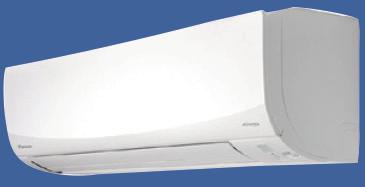
























Winter is the season when we reach for warmer clothes and search for ways to heat our bodies and the rooms in which we live and work. It’s also the season when some of us play sports that seem designed to leave us with aches and pains, and when conditions like arthritis are exacerbated by the cold.





Getting ready for winter is always a good idea. We’ve pulled together pros and cons of di erent heating options and tips about keeping warm inside and outside the house.
There’s some practical advice about keeping out the pests that try to invade our homes every autumn. We’ve even got some ideas about healthy eating during winter – get prepared with new recipes and maybe even a slow cooker.
If you want to help children this winter who are in need of warm clothing, or if you know of children who might benefit from a helping hand, we’ve listed some community groups you could contact.


Being very cold can make you sick. Older adults can lose body heat fast - faster than when they were young.
Changes in your body that come with ageing can make it harder for you to be aware of getting cold.
Being outside in the cold can lead to hypothermia.
Hypothermia is what happens when your body temperature gets very low. For an older person, a body temperature of 35°C or lower can cause many



health problems or worse.

Tips for being outside in the cold are:
1. Dress for the weather if you must go out on chilly, cold, or damp days. Camping and tramping stores sell light-weight merino clothing intended to keep people as warm as possible.
2. Wear loose layers of clothing. The air between the layers helps to keep you warm.
3. Put on a hat and scarf. You lose a lot of body heat when your head and neck are uncovered.
4. Wear warm socks and shoes or boots that keep out the cold and wet.
5. Wear a waterproof coat or jacket.
6. Change your clothes right away if they get damp or wet.














As children set o for school each day during the winter, they need all the right clothing to keep them warm and dry, and to keep chills and colds at bay.
Araincoat, solid shoes and warm socks are critical. They need a jumper to pull on over a shirt or a polyprop to wear under the shirt.
A beanie and gloves or fingerless gloves might be useful too, especially if your children are walking home or coming home later in the day when the temperature has dropped. You may find some quality barely used options in your local op shops.
Every day, one in five Kiwi children goes without the essentials that other children take for granted and wellbeing.
• VARIETY, THE CHILDREN’S CHARITY: Through Variety, you can sponsor a child to give them the essentials such as clothing, bedding, and a uniform. These are the things they need to stay well, enjoy school, and take part in their

communities. More than 1,400 children are waiting for a sponsor. To be a sponsor or to seek help for your child, go to https://www.variety.org.nz/.
• KIDSCAN: KidsCan works with schools and preschools around the country to deliver essentials to children in need so they can get the




best possible chance in life. Children can’t learn if they are cold, wet, and hungry. To donate or fundraise or to seek help for a child or children, go to https://www. kidscan.org.nz/.
Since 2005, KidsCan has given 525,000 jackets and raincoats to children, and 275,000 pairs of shoes.
FOSTER HOPE CHARITABLE
TRUST: This charity puts together backpacks of essential items for foster children, many of whom arrive at their new placements with little more than the clothes on their backs. Foster Hope has branches of volunteers throughout New Zealand eager to support the foster children and caregivers in their regions. To donate or seek help for a foster child, go to https:// www.fosterhope.org.nz/.
CLOTHED IN LOVE: Helps families in need by blessing them with free good quality preloved or new clothing for their children. To donate or seek help for a child or children, go to: https://www. clothedinlove.org.nz/.


even if you are staying in the house. Wear socks and slippers. Throw a blanket over your legs while sitting down.
to keep out drafts.
2. Make sure your house isn’t losing heat through windows. Keep your blinds and curtains closed. If you have gaps around the windows, try using weather stripping or seals to keep the cold air out.
3. It’s also possible to retrofit double-glazing into old windows. This can be carried out with the minimum of fuss and windows do not need to be removed. Retrofitting can take place one room at a time, as a ordability allows.
4. Dress warmly on cold days
5. Snuggle up with a plug-in electric throw. Options on the market are machine washable, have a timer and have a detachable controller. They could be perfect for chilly winter evenings or cold workplaces.
6. Make sure you eat enough food to keep up your weight. If you don’t eat well, you might have less fat under your skin. Body fat helps you to stay warm.
7. Drink alcohol moderately, if at all. Alcoholic drinks can make you lose body heat.
8. If a power outage leaves you without heat, try to stay with a relative or friend.
























You can now borrow a home-health self-assessment kit from your library to check the health of your home.
It’s simple to use and the results might surprise you.


Available free to all library members.









Winter can be tough on the immune system. It’s important to eat a variety of healthy foods to boost your health during winter and to ensure you’re getting the nutrients your body needs.


YGET READY FOR





ou could start getting ready to begin your day with creamy porridge with natural yoghurt, stewed fruit, and even nuts - the perfect winter breakfast. Add cinnamon to trigger your brain into feeling full so you’ll eat less during the day. Oats are also great for getting fibre, zinc, energyboosting iron, potassium, and antioxidants into your system.
Winter foods such as stewed fruits and soups of all types are packed with important complex carbohydrates. They’re designed to warm, energise, and nourish us throughout the cold season. Other examples include roasted kumara and pumpkin, mashed potatoes, and apple and rhubarb crumble. You could make the ultimate in comfort foods - chicken noodle soup - using left-over chicken, some dried noodles, and any veges available.
Jamie Oliver’s one-pan wonders,




free on the internet, include labour-saving and money-saving food recipes including some meatfree options.
If the cost of meat and fish seem unreasonable this winter, try adding dried or canned beans, peas, or lentils to some of your dishes.
They’re a great source of protein and are full of fibre, antioxidants, vitamins, and minerals. Because they soak up flavours, they work well in curries, soups, and stews.



Stews of all types can be delicious, filling, and nutritious. If you have a hunter in the family who regularly brings home the venison, a slowcooked venison stew could keep you and the entire family going for a couple of days.
You may want to invest in a slow cooker – they’re great for stews, soups, casseroles, curries and more.
When you cook meat in a slow cooker it tenderises the meat properly and gives the best
flavour. It keeps in essential nutrients, which can otherwise be lost in the cooking process.
Slow cookers also use less electricity compared to an oven and can do their thing without supervision from the chef.
Look out too for free recipes for low-cost meals using in-season ingredients, available at many supermarkets.











Autumn is the time when pests of all kinds are rushing indoors to find cosy indoor spots for bedding down and breeding.



FOR




Pests such as rats, cockroaches, and some spiders will nest within your walls. They tend to chew on electrical cables and drywall and are known to pass on diseases to humans. Watch for droppings or signs of nests. If you find signs, try to find the source of the infestation. Now is the time! Letting a pest problem fester will later go on to become unmanageable.
Openings and cracks are an entry point for pests into your home. As much as possible, block their access. Instal screen windows and doors if you can and repair any damaged screens. Check the attic and inspect all roof spaces regularly. Repair cracks and damaged roof tiles.


Keep up with outdoor maintenance to keep rodents and insects away from the house. Unmanaged grass and shrubbery act as good hiding spots for insects and rodents. Keep branches, shrubs and bushes trimmed and away from the house. Compost should be kept in a sealed area away from the house. Garbage bags and bins attract the most rats and cockroaches and should be well sealed. It’s a good idea to store these and any other yard waste, like firewood, at least five metres from the house.
Monitor drainage systems, pipes, water storage tanks, and gutters. Keep the house dry and well ventilated. Moisture and dampness attract pests, making basements, garages, attics, bathrooms, and laundry rooms hotbeds for pests and mosquitos. Dehumidifiers can help to control moisture.
Food left unattended attracts insects and rats. Keep everything sealed in airtight containers and store in a dry place. Keep garbage bins sealed and in clean surroundings.
If preventative measures aren’t enough, options for pest control include baited traps, fumigating inside and out, and automatic spray dispensers. There are many companies who can o er advice and ranges of products, including products using natural and environmentally friendly ingredients. In short, the advice is to destroy infestations, prevent more pests coming in, and immediately deal to those that do wander in occasionally.
Pests, your days are numbered!






HOMES INITIATIVE
We provide education and access to resources to create warm, dry, and healthier homes for Wairarapa whānau.
STAY ACTIVE - STAY CONNECTED
Move your tinana (body) as much as you can. A consistent short walk around the block is a great start. Follow your interests and join a social group that suits you. Stay active and connected during Takurua.